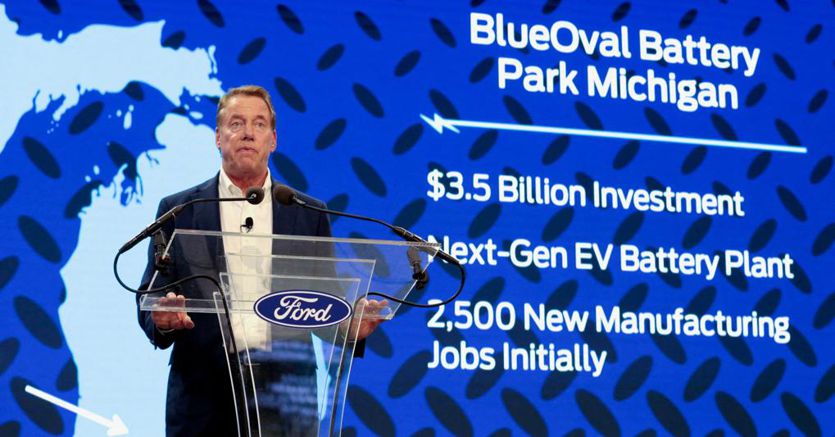Ford takes a second route on battery chemistry for electric vehicles. It will be the first automaker to produce both nickel cobalt manganese (NCM) and lithium iron phosphate (LFP) batteries in the United States. An announcement that comes right on the sidelines of the one on the cut in jobs in Europe but which offers new opportunities overseas. The Blue Oval announced it is investing $3.5 billion to build the country’s first LFP battery plant, offering customers a second battery technology within its electric vehicle lineup.
The facility, called BlueOval Battery Park Michigan, will be located in Marshall, Michigan, and will initially employ 2,500 people when it begins production of LFP batteries scheduled for 2026.
With this additional investment, Ford and its battery engineering partners have so far announced $17.6 billion in investment in electric vehicle and battery manufacturing in the U.S. from 2019, as part of Ford’s commitment to invest more than $50 billion in BEV globally through 2026. Over the next three years, these investments will lead to more than 18,000 direct jobs in Michigan, Kentucky, Tennessee, Ohio and Missouri and more than 100,000 indirect jobs.
Diversifying and localizing Ford’s battery supply chain in countries where it builds electric vehicles will improve availability and affordability for customers while strengthening consumer demand. Ford is working to deliver 600,000 electric vehicles annually globally by the end of 2023 and two million by the end of 2026 as part of its Ford+ plan. As the company rapidly scales EV production, the introduction of LFP batteries enables it to produce more EVs and offer more choices to new customers, helping support its goal of an 8% EBIT margin by 2026 Even before the new Marshall plant opens, Ford will introduce LFP batteries in the Mustang Mach-E this year and the F-150 Lightning in 2024 to increase production capacity, aiming to reduce wait times for the customers.
The new battery plant in Michigan will initially reach approximately 35 GWh per year of capacity, capable of powering approximately 400,000 future Ford BEVs. As part of Ford’s plan to offer new battery chemistry in key regions where it makes electric vehicles, Ford has reached a new agreement with Contemporary Amperex Technology (Catl), under which a wholly owned Ford subsidiary will produce the cells of the battery using LFP technology know-how and services provided by Catl, which operates 13 plants in Europe and Asia.
